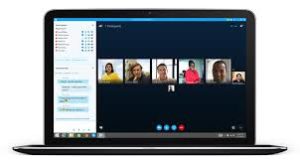The recent Morgan & McKinley Flexible Work Practices Survey found that 97% of professionals felt that work flexibility has a positive impact on productivity and that 3 out of 4 workers surveyed had access to flexible workplace policies.
But what is workplace flexibility?
Workplace flexibility is where an employer and an employee can agree upon changes to how, when and where an employee can perform their duties to meet the business demands. Ideally, the level of productivity is maintained or increased and is therefore beneficial to both parties. The most common changes are –
- Flexible start and finish times
- The ability to work from home or remotely
- Time off in lieu of extra hours worked
- Reduction in working days – for example completing the hours in a 4 day week
- Job sharing
 The benefits to the employee are generally in and around work/life balance with the ability to manage personal and family time more effectively. Flexible hours mean that an employee can have more control over when they get their work done around the requirements of the family. Others may find working from home will mean that they aren’t wasting time commuting to and from the office whilst others may find that a break from disruptions at the office may make them more productive.
The benefits to the employee are generally in and around work/life balance with the ability to manage personal and family time more effectively. Flexible hours mean that an employee can have more control over when they get their work done around the requirements of the family. Others may find working from home will mean that they aren’t wasting time commuting to and from the office whilst others may find that a break from disruptions at the office may make them more productive.
This all sounds good for the employee but what are the benefits to the employer?
Talent attraction is an ongoing challenge and a number of recent surveys have shown that workplace flexibility is becoming more important to job seekers than higher salaries. Also, if you have the ability to hire an employee and have them working remotely all of the time, you can source that person from anywhere rather than just locally. Also, you greatly reduce your office overheads if you don’t have to provide office space for all employees at once.
Another benefit is that by respecting and trusting the employees to work productively in the own space in their  own time, they will return that trust through loyalty. The employer will also have a more engaged workforce with better morale and culture. It is important to encourage inclusiveness and with modern technology it is easy and cost effective to use various teleconferencing methods to have (almost) face to face communication. I use SKYPE regularly to keep in touch with our Auckland office and I heard a story recently where a company had its’ Christmas Party via SKYPE Video. An hour was blocked for everyone to dial in and 3 hours later (and a few beers and wines later) the wives/husbands and kids were all involved.
own time, they will return that trust through loyalty. The employer will also have a more engaged workforce with better morale and culture. It is important to encourage inclusiveness and with modern technology it is easy and cost effective to use various teleconferencing methods to have (almost) face to face communication. I use SKYPE regularly to keep in touch with our Auckland office and I heard a story recently where a company had its’ Christmas Party via SKYPE Video. An hour was blocked for everyone to dial in and 3 hours later (and a few beers and wines later) the wives/husbands and kids were all involved.
Absenteeism through illness will be reduced as employees are less likely to call in sick and will be able to perform their duties remotely without the risk of infecting their colleagues. Quite often someone isn’t sick enough to not perform their duties but don’t want to risk the health of their colleagues.
The constant distractions and interruptions that are encountered in the workplace can greatly reduce productivity. Colleagues that interrupt workflow by discussing what they got up to on the weekend or the weekend’s footy games can be distracting to not only those involved in the conversation but also others around. Also, the number of meetings will be reduced and should be more effective with less irrelevant discussions or attendees.
In summary, the key requirements to make a flexible workplace effective include –
- Providing the tools for the employee to work remotely
- Trusting your employees
- Maintaining clear communication
- Consistency for all employees
- Having a clear HR policy in place
- Setting clear guidelines through induction and ongoing training







